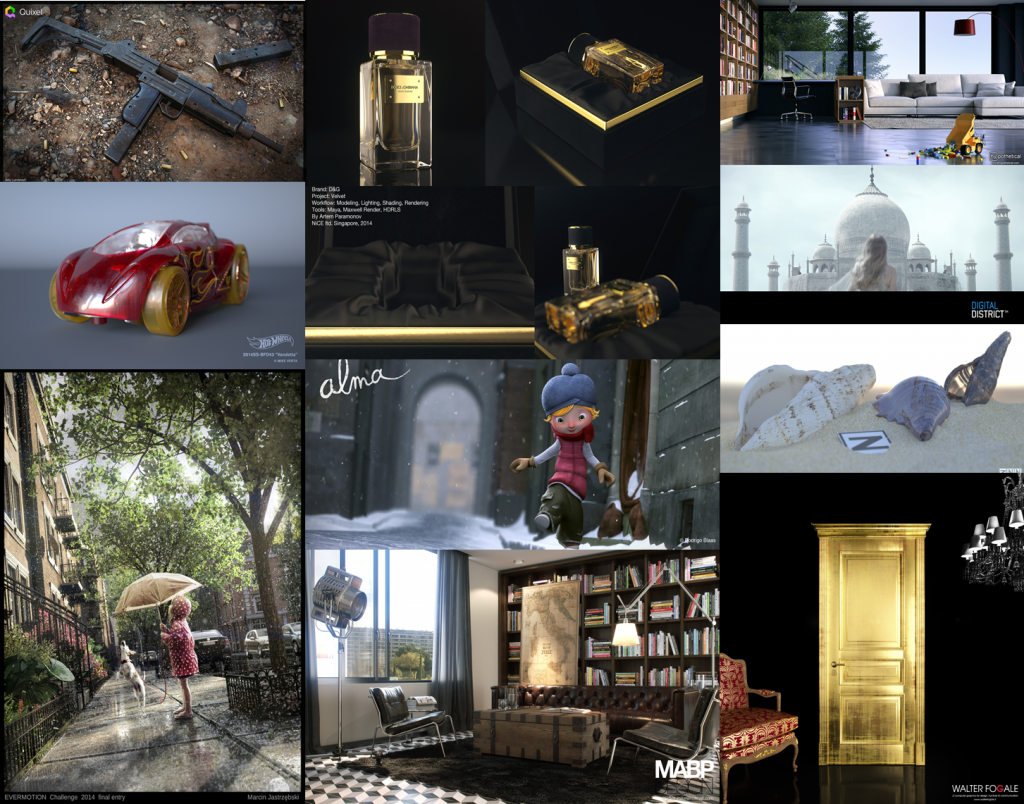Hello everyone!

In this post I will list the major do’s and don’ts to implement in your workflow to get the best out of Maxwell. I hope they prove useful to you, please feel free to share any tips that you have come across or experienced in your rendering. This tutorial is provided with the full support of Enjoy Studio, the no.1 Studio Videochat Bucuresti
DON’T
- Model your scenes out of scale. Make sure you don’t have 1 km window or 5 mm car.
- Set your emitter watts/efficacy or lumens to insane values. Try to keep them fairly close to real world values. If the render is still too dark, change the camera exposure values instead, just as you would in the real world.
- Set unrealistic camera parameters. Keep them in reasonable ranges just like in a real world Camera. Otherwise, you’ll also have to set unrealistic emitter values to match the desired exposure.
- Use full white (255,255,255) value or textures in Reflectance, especially for wall materials. Doing so will only amplify the bounces, add noise and damage contrast. A maximum of 240 is suggested for most white surfaces.
- Use maximum Roughness of 100 (Lambertian). Keep it between 95-97 for a more realistic shading on your roughest surfaces.
- Use many BSDF or Layers etc for fun. Keep your materials as simple as possible. Most materials will not need more than 2 or 3 BSDF.
- Use Opacity Maps (or Clip Maps) on hundreds/thousands of instanced leaves. Geometry leaves will be processed much faster than Opacity Maps.
- Use bump/normal maps on everything, especially on distant objects. They are OK for close-up renders but bear in mind that very fine bumps have a negative impact on render time.
- Intersect an emitter material with a subsurface scattering material or dielectric (glass, water etc).
- Use emitters with big power differences between them. This will cause some optimisations in Maxwell to underperform, and make the render converge slower. If you need very powerful and very weak illuminants in the same scene, set their initial powers relatively close and then adjust them later using Multilight in the post.
- Use base material components (BSDF, Coating and Layers) for emitters if you don’t have a specific purpose for doing so. The base material will not be visible unless you turn off your emitter with Multilight.
- Use Dispersion or Complex IOR unless you are making jewelry renders or product visualization. Dispersion and Complex IOR are very costly effects for everyday scenes.
- Use Coatings for creating everyday clearcoats. Plastic approach using 2 BSDF (normal or additive) will be much faster instead.
- Activate rendering of channels that you don’t need – as each of them will add to the render time.
- Use Multilight if you are fine with the emitters and will not make any further changes.
- Waste resources freely. Bear in mind that every subdivision, displacement, grass fin, texture, and extra Multilight emitter that you add is eating up your limited memory, which can lead to a crash or serious loss in performance when the physical memory is over.
DO
- Use simple geometry for your emitter surfaces. A simple, single sided polygon will in most cases work very well. If you need a spherical emitter do use a sphere, but try not to make it 100 000 polygons….This won’t have a hugely negative impact on the render time, but it won’t help either. And it will make your MXS scene file unnecessarily large.
- Remove unnecessary emitters in the scene. e.g. Rendering an apartment interior with lots of rooms that all have lights in can be improved if you switch off or remove irrelevant emitters.
- Hide unnecessary objects in the scene. If the object is not directly or indirectly seen by the camera or have any influence in the scene, it’s better to hide it. A porcelain cup in a closed cupboard with displacement could easily kill your benchmark.
- Create new materials using Material Types unless you are familiar with Custom material settings. In particular, the Translucent Type is very helpful for avoiding unwanted noise in translucent materials.
- Use low poly geometry for shaped emitters instead of using Opacity Maps on emitters.
- Use transmissive materials (glass, water, SSS) on watertight objects to avoid artefacts and unwanted sparkles (namely fireflies).

